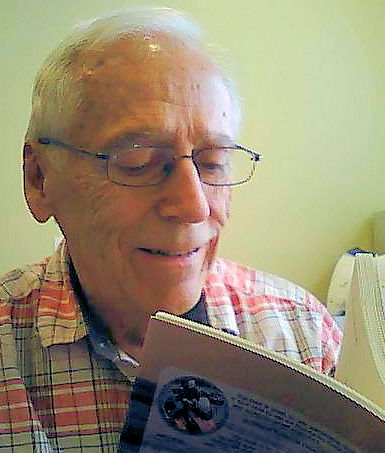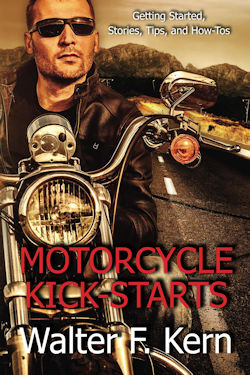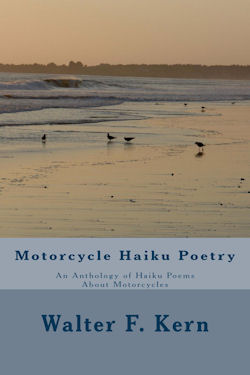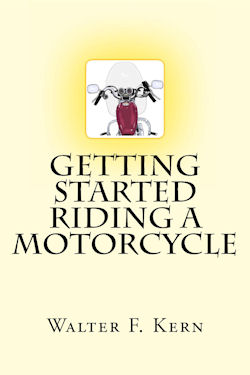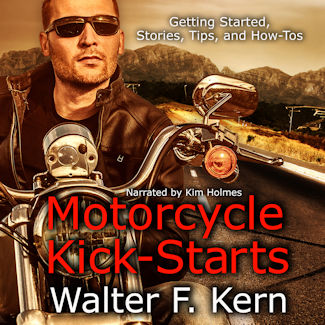Restore a Motorcycle
By Walter F. Kern
Sooner or later every motorcyclist gets an urge to restore an old motorcycle. Most don't act on it. Some riders have a dream to restore an old motorcycle they've seen or remember from their youth. A few of these actually see the restoration through to completion. Here are some thoughts about motorcycle restoration and a few tips about how to do it.
I read a book called Rebuilding the Indian -- A Memoir, by Fred Haefele shortly after I became an About.com Guide. Here's an excerpt from a review I wrote about the book:
"The author was a 51-year-old tree surgeon, an ex-professor with an unsuccessful novel, when he decided he wanted to put $5,000 into a basketcase of Indian motorcycle parts. His dream was to convert the pile of parts into a restored 1941 Indian Chief motorcycle. You learn the process that one goes through to completely restore an old motorcycle but more importantly, you see the transformation of a restorer into a new man, a man he thought he would never become."
I also found another book, The Restoration of Vintage & Thoroughbred Motorcycles, by Jeff Clew. This book was first published in England in 1976 and reprinted in 1996. It has 18 chapters covering: Finding a machine; The workshop; The Restoration Plan; The Frame and Forks; Wheels, Tires and Brakes; Seats; Gearboxes; Engines; Ignition Systems; Carburetor and Exhaust Systems; Accessories; Sidecars; etc.
Here are six tips I culled from this book to get you started restoring an old bike. Consult the book for all the details.
- Finding a Machine
Get experienced advice from people who have restored motorcycles. Join a national vintage motorcycle club with many members. Decide how much of a restoration you want. Don't buy a basketcase of parts because it may just be what's left over after another restorer gave up. When you find something that interests you, don't delay. It may be gone if you take too much time deciding.
- The Workshop
Use what you have but make sure it's warm and dry and you have a good workbench with a strong vise. The area should have adequate lighting and handy electrical outlets. Take inventory of existing tools and weed out those that may cause damage during restoration.
- The Plan
Take detailed pictures of your bike at the beginning so you remember where all the parts go. Thoroughly examine the machine to determine what needs to be done. If the machine has scattered parts not attached, add them to the bike so you are sure what items may be missing. Assign boxes to major components as you disassemble to restore the bike. Make sketches and drawings of parts, electrical connections, etc. before disassembling. Decide what can be reused and what needs to be redone. Decide if you will do the individual work or have it done for you. Draw up a schedule to complete the various jobs. Be relaxed in the restoration but do stick to a schedule or it will never get finished.
- Engine
If a spark plug has been removed before you bought the bike, be wary that the pistons may have seized. Special procedures are necessary to free everything up. Engine renovation may best be left to a specialist contractor unless you are experienced.
- Carburetor and Exhaust Systems
Carburetors suffer the most wear and may need to be replaced. Be sure to take the old unit with you as you seek out a replacement. Previous owners may have the wrong parts installed. Be careful that the muffler system is solidly mounted and no air leaks are present.
- Preserving and Storage
Most restored machines aren't used that much. You need to store the bike in a warm, dry area. Always clean it after each use. Keep it locked up so it won't be stolen. Don't leave registration and other papers with the machine. Take special precautions with the battery and stabilize the fuel if you expect the machine to not be ridden for a long time.
These tips should get you started learning about motorcycle restoration and reading these two books will make your journey much smoother.
Restoring old motorcycles is not for everyone. However, with the right motivation, a suitable place to do the work, the right tools, an understanding spouse, and enough cash, you may also be able to convert a basketcase into a work of art. Be sure to post a picture of your completed bike in our Moto Pics Gallery for all to see.
|
|
| |
| |
|
|
|
Click Picture for Walter F. Kern's
Kindle, Paperback, and Audible
Books
|
More about motorcycles
|
|


